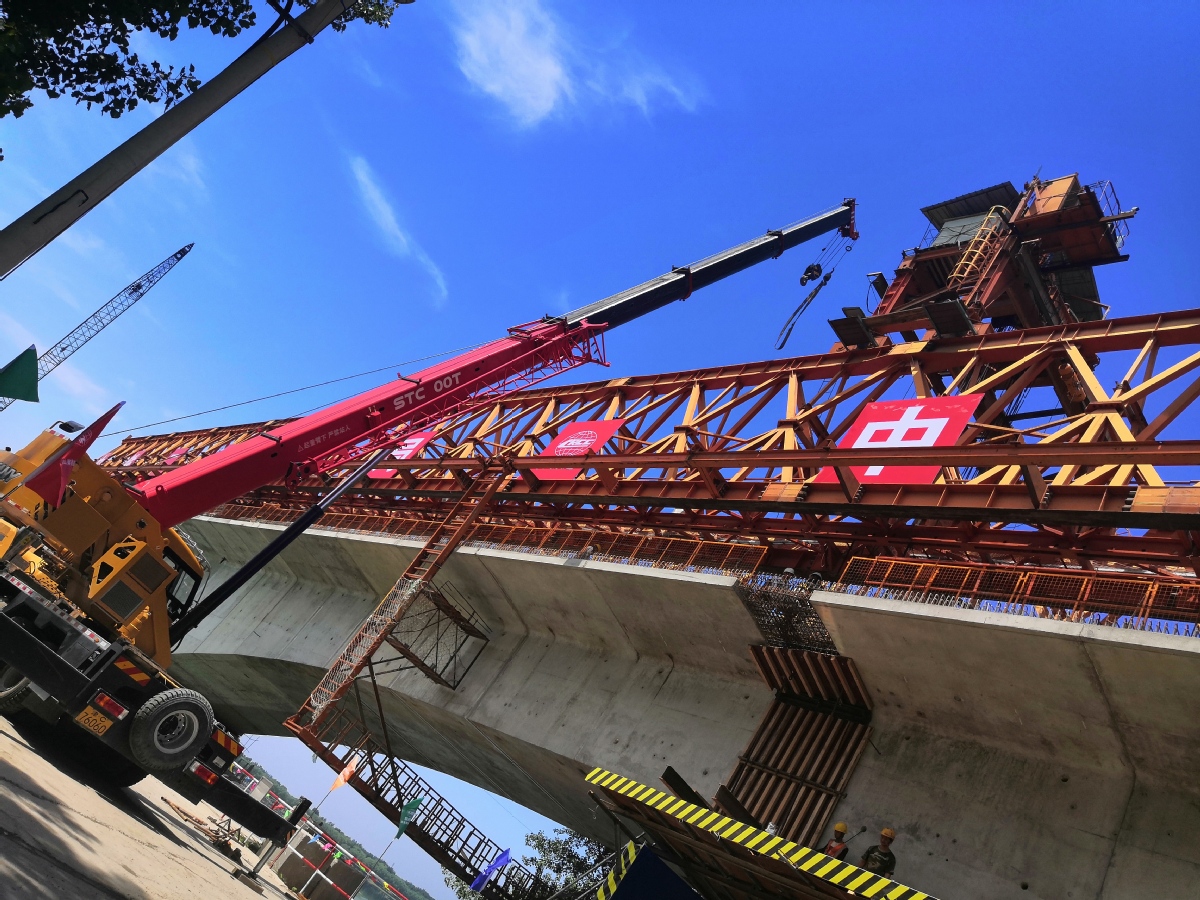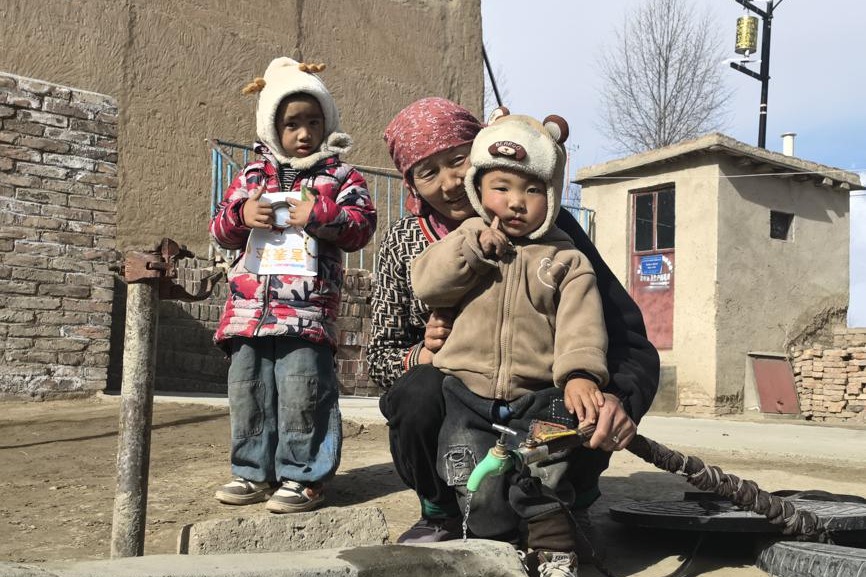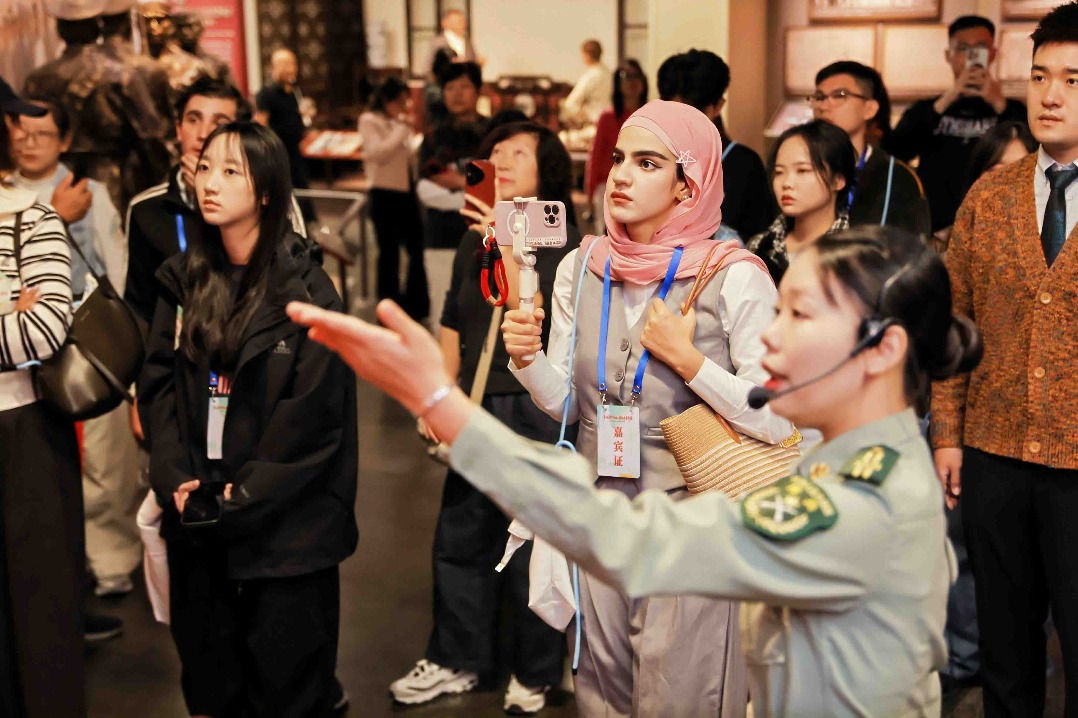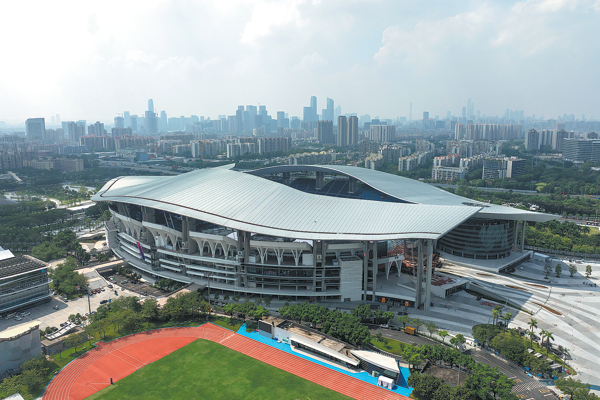Construction of Asia's largest 'blocks building'-style bridge reaches key stage


The merging of two key parts of Asia's largest "blocks building"-style bridge was completed in Tianjin on Thursday.
The bridge was connected by different beam segments like the "building blocks" method and eventually the "blocks" were "glued" together with leading technologies from China Railway 24th Bureau Group Co Ltd.
With a length of 1.01 kilometers, the bridge was separated into two parts.
The recent merging saw the completion of its first key parts, which were connected by two sub-parts of continuous beams of segments, including one sub-part of 48m x 80m x 56m and another of 16 blocks of 40m segments; the remaining parts of the bridge are yet to be completed, but are expected to be done in November.
The bridge spans the Chaobaixin River in Baodi district, northern Tianjin, a hub of Beijing, Tianjin and Tangshan, North China's Hebei province.
It will serve as a key part of the upcoming Beijing-Tangshan Railway, which will become the third railway connecting Beijing and Tianjin, after the Beijing-Tianjin City Rail and Beijing-Shanghai High-Speed Rail, which crosses Tianjin.
The technology termed "Continuous beams of segment prefabrication and bonding assembly" indicates that the beams were "glued" together, instead of constructed one part with another based on piers on the river, and represents state-of-the-art technologies in China's high-speed railway and bridge construction.
The "gluing" process needs the pouring of concrete and is supported by precise software and digitally controlled technologies.
"I can make a metaphor that the bridge was formed like putting all the 'blocks' together by 'glue', while the traditional bridge's constructions are made after the construction of all the piers as the foundations and then to construct the beams above the piers," said Wang Qian, project manager of the Beijing-Tangshan Railway, China Railway 24th Bureau Group Co Ltd.
The Beijing-Tangshan Railway is 148.7 kilometers in length with trains set for a planned speed of 350 km per hour. Government authorities didn't release the exact completion date of the project.
An Yanpeng, director of the Engineering Department of the Beijing-Tangshan Railway Co Ltd, said the majority of the project's basic facilities supporting the railway between Baodi district to Tangshan has been completed.
"Tianjin has seen all its key transportation projects resume their constructions after the COVID-19 pandemic," said Yang Shuhai, vice-director, Tianjin Transport Committee.
In the near future, the city will see four high-speed rails connecting Beijing, including the Beijing-Binhai, Beijing-Tangshan, Tianjin-Daxing Airport and the existing Beijing-Tianjin City Rail.
"A so called half-an-hour transportation between Beijing and Tianjin will benefit a number of city commuters," Yang said.
- Tunpu culture: A collision of civilizations
- China begins preparations for Shenzhou XXII launch
- New teaching materials to aid international Chinese language education released
- CHTF features innovative tech that coverts seawater into plastic
- Policy allowing Guangdong vehicles to travel to Hong Kong takes effect
- HK and Shenzhen jointly host the first cross-border marathon of National Games



































